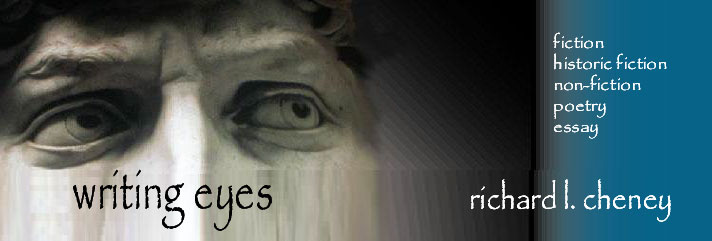Wednesday, January 20, 2010
Bella Gioconda by Richard Cheney [historic fiction]
For five hundred years, it was just a chalk drawing of a young woman, the daughter of Chianti vintner, Antonmaria Gherardini. Leonardo da Vinci consented to be Maria's tutor. Her powers of observation and skill in translating that sight to paper were more expressive than even he, the most intelligent and talented man in the world, could imagine. At the culmination of four years of tutoring in the 1490's, Leonardo is captivated by the girl whom he calls La Gioconda, one who smiles. She literally stole his mind if not his heart. While appreciating her finished portrait on the eve of her wedding, Leonardo grasped the paper by the upper corner, leaving his fingerprint in the chalk, innocently setting history on fire that he was the artist of the portrait. But five hundred years can confuse identity of both subject and artist. A Swiss art collector, Claude Beauvin, owner of a modest collection, heard a rumor and sought to confirm it. In the process, his wife, Ghiselle, and a New York art dealer, an art history professor and a man from INTERPOL become entangled in the drawing's history. A reclusive young widow, Andrea Garibaldi-Chase, current owner of the drawing, seeks to sell it at auction. The bidding surpasses Beauvin's funds, but a note delivered to him along with a substantial roll of dollars allows Beauvin to outlast all other bidders. Betrayed and abandoned by his calculating wife, Beauvin discovers who made the drawing, but also that the drawing's subject is more than a random girl. She is the ancestor of the alluring widow, Mrs. Chase, and is not just Maria, but a woman who is known by her true given name in honor of her father's mother.
Subscribe to:
Post Comments (Atom)



No comments:
Post a Comment